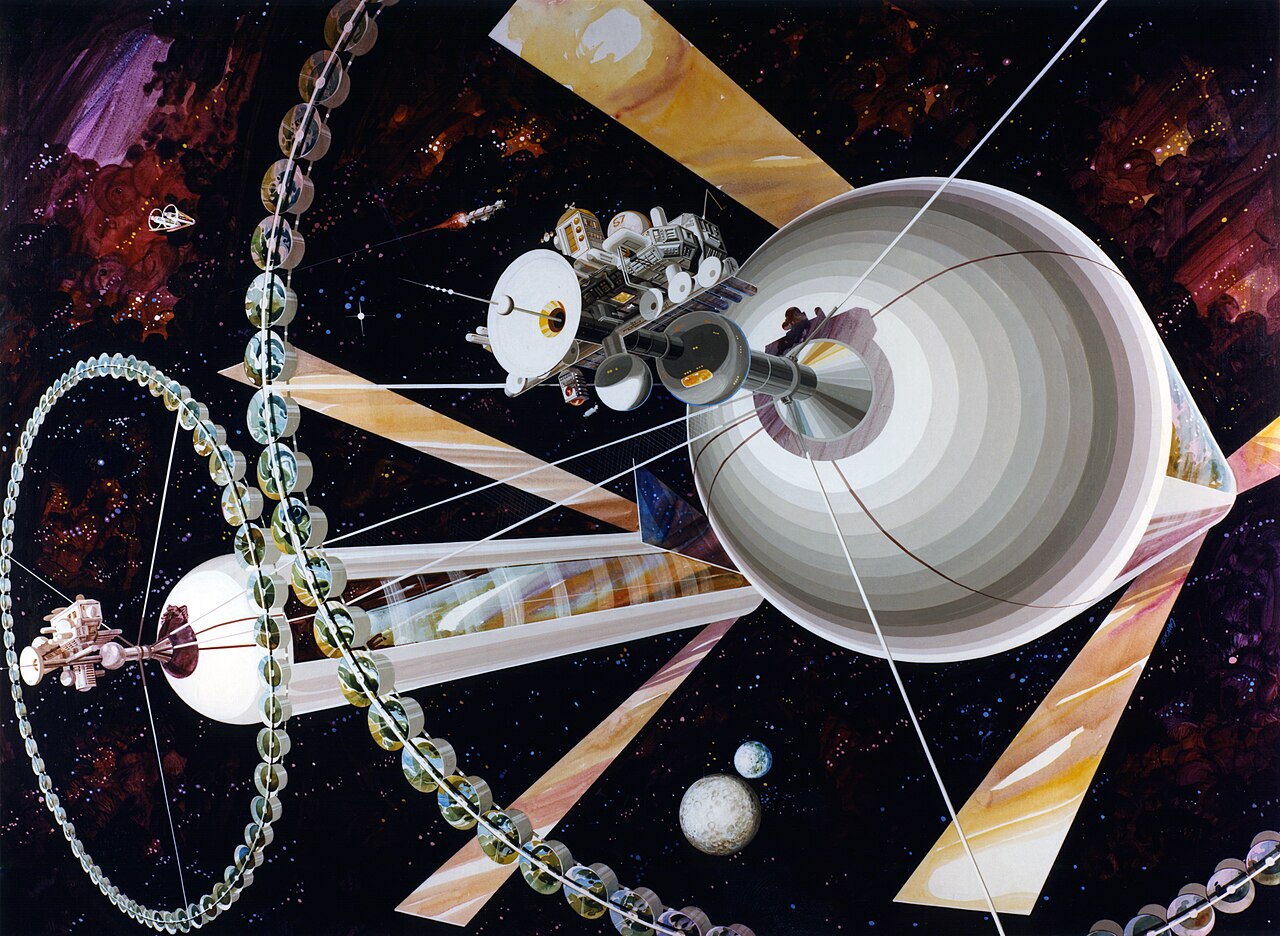Rotating Space Habitats
Rotating space habitats are a likely means by which humans will expand into space. They use rotation as a novel method of creating an apparent downward force to mimmic gravity. These structures may also be known as cylinder or ring habitats based upon their length relative to their radius. The occupant of a rotating ring or cylinder habitat exists along the inner edge of the ring or cylinder with centrifugal force from the rotation pulling them outwards. This force produces apparent gravity allowing the occupant to walk around as opposed to floating around. Ring and cylinder habitats have many benefits over traditional ideas of planet terraformation. These include:
- Rotateing habitats can be constructed in Earth's orbit so no need to travel huge distances.
- They require orders of magnitude less mass per M^2 of floor space than a planet which allows for a greater potential population
- Rockets can be used to move them away from danger
- Less destruction to the natural environment relative to terraformation.
- Allow for very fine control of the internal conditions.
- Can be easily sealed or isolated from outside pathogens or species.
Habitat Types
Plenty of types and classes of habitats that produce apparent gravity via rotation have been thought up over the years. These range from the smallest that could house only a handful of people to ones that have the potential to house quadrillions. Usable space within these structures can be greatly increased my making them concentric, that is, putting smaller rotating habitats inside larger ones. This is a relatively simple method of adding living space and has the additional benefit of reducing the quantity of outside shielding needed per unit area of living space. It also allows the habitated space to have a third dimensional component although, assuming the same desired gravity is produced on each level, the levels would rotate relative to eachother so you would have a set of constantly changing neighbours. Of course housing people is only one usecase; they could also be used for nature reserves or factories among other uses. Below are outlined three major types of large cylinder habitat:
O'neill Cylinder
An O'Neill cylinder is one of the earlier concepts of a rotating space habitat. Also known as an O'Neill colony, it was first proposed by American physicist Gerard K. O'Neill in his 1976 book The High Frontier: Human Colonies in Space. These habitats were envisaged using the known materials of the time; steel. The largest of the O'Neill Cylinder designs is known as Island Three. Island Three consists of two counter-rotating cylinder habitats each of which have a 4km radius and are 32km long. Two cylinders are used to counteract the angular momentum and increase stability.
